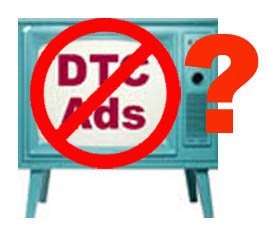
Liz Seegert is a freelance health writer and adjunct instructor in Media and Communications for Empire State College.
 Is advertising prescription drugs directly to consumers a good thing?
Is advertising prescription drugs directly to consumers a good thing?
It all depends on whom you ask. Some physicians complain of pressure from patients to put them on the new drug du jour, even when current medications are more than sufficient. Others believe that there is inherent educational value in drug ads; they raise awareness of a drug’s availability, associated symptoms, and possible need for treatment. Still others advocate limiting the role of DCTA to general information and education, without specific product mention.
Most patients lack the clinical expertise to make judgments on the appropriateness of one medication over another. It is likely that most neglect to read the fine print, and tune out the faceless TV announcer listing contra-indications and side effects. What consumers see are those people in the ads – whether riding in a Mustang convertible or playing with their grandkid acting as if this drug is the next best thing to winning a Mega Millions lottery.
Of course it is. Advertising is designed to persuade and encourage purchases. So naturally drug benefits are presented in a very positive light while potential negatives are minimized. Any negatives are buried in the fine print or glossed over.
Does it work? In Direct-to-Consumer Advertising and Online Search(2011)analysts from the Federal Trade Commission looked at DTCA’s relationship to subsequent online searches for drugs, drug classes, and health-related information. Their findings yielding some interesting trends. Print and online ad viewing led to an increase in searches for information about diseases and conditions. TV ads had much less impact on information related searches, but led to more drug-specific and drug class queries
What’s really going on? DCTA is apparently working. Consumers are responding. They are seeking out pertinent health information,participating in discussion groups, chat rooms, and finding support groups for their particular disease or condition.The growing popularity of sites such as Organized Wisdom, Patients Like Me and Diabetes.org reinforces the concept that consumers want to be educated and feel connected.
“Our analysis shows that consumers seek diverse information about prescription drugs online and their behavior is influenced by the online and offline advertising to which they are exposed…offline advertising increases not only the likelihood that a user searches for a drug, but also the intensity of search…” (Chesnes and Jin, 2011, 33).
So analysts think that DTCA has a “positive and significant effect” on in-depth searches, for specific drugs and for others in the same class. Television tends to drive consumers directly to a company website, which may lead to a broader informational search. I have been a long-time DTCA skeptic, but this latest analysis provides new evidence that it can be a springboard to help consumers gain additional knowledge about their condition and how best to treat it. As patients become more proactive in their care,“talk to your doctor” takes on a new meaning.









Diana Mason / May 27, 2011
DTC ads are only for new drugs that $ay not have been tested head-to-head with older, cheaper generic drugs for the same condition. The FDA only requires that new drugs be tested against a placebo. So did this study find that patients were investigating unadvertised, generic alternatives along with the advertised drug? If not, then DTC advertising still frames treatment choices as “the newest, most expensive drug is best” and encourages people to seek pharmaceutical answers to health problems that may be resolved with non-pharma, behavioral interventions. Of course, there’s not a lot of profit in behavioral interventions…
/
arthurdobrin / June 5, 2011
Thanks for this latest information. I’ve also been skeptical of the practice but the evidence is pointing me in the direction of acceptance.
/